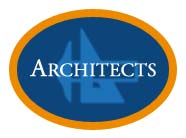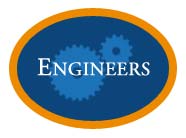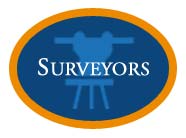Laser scanning is not a new technology in land surveying. In fact, the technology has been around since the 1960s, but it wasn’t used in engineering until the 1990s. New ways to use terrestrial laser scanning in engineering and architectural projects are still being discovered.

How Do They Work?
New terrestrial laser scanners are simply ground-based versions of the airborne LIDAR. Terrestrial laser scanners differ from the airborne LIDAR in that they are easier to get into difficult to reach places. They emit laser pulses and measure the distance between the laser and the target using the time it takes for the laser to bounce back to the scanner.
Engineers and architects have been using them to make 2D drawings, 3D models, topological maps and volumetric calculations. Because laser scanners can reach all corners of a project, they can be used in a wide variety of projects. The original use for these scanners was to create as-built models of architectural and engineering structures.
Building Health Assessment
Structural health assessments of historical buildings can help locate potential issues in old buildings before they become disasters. In 2017, a study was published in the Structure and Infrastructure Engineering Journal detailing using terrestrial laser scanning to assess the health of a historical building in Florence, Italy – the Baptistery di San Giovanni.
The study found that terrestrial laser scanning was more than adequate to document the health of the entire building. The study formed a baseline model of the building that can be used with future terrestrial laser scans to track changes to building. Because the laser scanner also records digital pictures, a highly detailed tracking model can be developed.
A different study done in China published in the Advances in Civil Engineering journal in 2019 looked at using terrestrial laser scanning to assess the damage to buildings after an earthquake. They studied 21 houses and developed the terrestrial laser scanning-based building shape analysis model. The study found that “when using an equidistance polygon array to depict a three-dimensional building, 0.5m is a reasonable sampling interval for building earthquake damage analysis.”
Study Bridge Performance
In 2019, terrestrial laser scanning was used to evaluate the performance of bridge structures, including abutments, columns, approach slabs, and bridge decks. The study used a bridge rehabilitation project in North Texas to develop a framework for analyzing the ground movements around the structures and vertical movements of the approach decks. Inclinometers installed under the pavement were used to verify the results.
Similar movements in the bridge structures were recorded by both the laser scan and the inclinometers. The laser scan provided more information about the ground movements than the sensors could provide. Currently the main method for analyzing bridges for movement and damage is dynamic testing using piezoelectric accelerometers, fiber optic sensors, and strain and inductive gauges. This is a very accurate way to test bridges for failures, but it is very intensive. This technology could make testing bridges much easier and faster – making us all a little safer.






 We're more than just brokers. We're A/E specialists, delivering the right coverage and exceptional value and service to hundreds of design firms of all sizes. Of course we leverage the latest industry resources to provide you with coverage, risk management and contract review tailored to your practice. But we also remember the difference between simply billing clients and actually serving them. See for yourself. Contact us of a competitive quote on your professional liability insurance.
We're more than just brokers. We're A/E specialists, delivering the right coverage and exceptional value and service to hundreds of design firms of all sizes. Of course we leverage the latest industry resources to provide you with coverage, risk management and contract review tailored to your practice. But we also remember the difference between simply billing clients and actually serving them. See for yourself. Contact us of a competitive quote on your professional liability insurance.